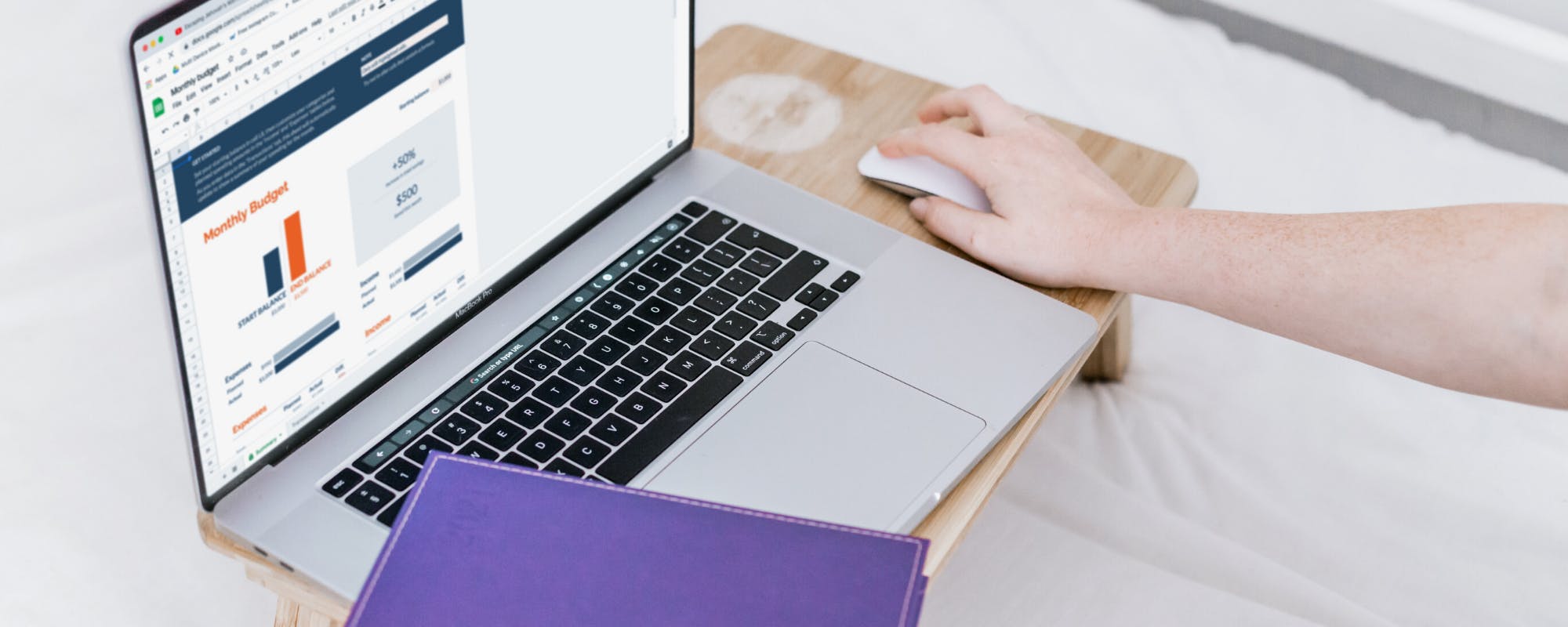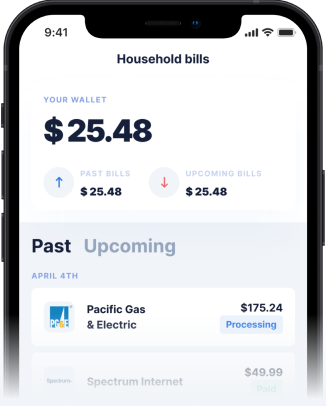No More Overdraft Fee Charges
Tired of logging into your bank account and seeing unexpected fees for things you thought you’d paid for? Sure you had enough money to cover that last item, only to find out you didn’t — and worse, you forgot another item you tried to pay for with the same lack of money?
There’s nothing more discouraging than struggling with money and having to pay overdraft fees on top of that. That’s why we’re here — to help you understand overdraft fees and how to avoid getting charged for them again.
What Is an Overdraft Fee?
An overdraft fee occurs anytime you’ve dipped into your bank account when there’s nothing to draw from. It’s like trying to pay for something when the balance in your account is already zero. For example, let’s consider a scenario involving a woman named Kara. Kara has three kids she’s trying to wrangle out of the grocery store, so she quickly swipes her card to pay for the items. She gets home, expecting peace of mind now that she finally has everything she needs. But when she logs in to her bank account, she finds out she not only didn’t have enough money for those last few grocery items but she was also charged for not having that money!
If you’ve ever been in a similar situation, you know how frustrating and demoralizing it is to end up paying extra money when you’re already short on funds. Unfortunately, banks aren’t your friends. They won’t remind you that you’re running low on money, because they want to charge you that sneaky extra fee for using their services.
How Much Is the Average Charge?
Whether you’ve overdrawn your account by $1 or $500, you can still be charged an overdraft fee. Often called “insufficient funds (ISF)” or “nonsufficient funds (NSF),” overdraft fees have skyrocketed over the last few years. It’s common for them to be about $30 to $35 dollars. Banks also typically charge an overdraft protection fee every time they move money from another account in your name to cover the overdraft in your checking account, and they charge an extended overdraft fee for each day your account stays in the negative.
Wells Fargo has an overdraft fee of $35, plus an overdraft protection fee of $12.50, and that’s without any extended overdraft fees. Chase Bank charges $34 for overdrafts, $10 for overdraft protection, and $15 every five days for extended overdrafts. Bank of America charges $35 for overdrafts, $12 for overdraft protection, and $35 every five days you stay in the negative. Yikes! Debt can add up not only from overdrafts but also from the extra fees surrounding them, putting you in an even worse position than if you hadn’t tried to pay for that last item or bill.
Tips to Avoid Fees
It’s always wise to read the fine print and choose a good checking account with a generous fee policy. But since banks don’t exactly make that easy for you, here are a few more tips to protect yourself and those you care about from having to deal with overdraft fees. First, sign up for online banking and/or download your bank’s mobile app. That way, you can keep track of money coming in and going out to have a better idea of what’s truly left in your wallet. Next, you can also set up balance alerts so you’ll be notified when your account dips below a certain amount. This is helpful so you don’t have to rely on your own memory when it comes to finances.
Turn on Overdraft Protection
Another good way to protect yourself from NSF fees is to turn on overdraft protection. Turning on overdraft protection allows you to transfer money from one account (like a savings account) at your bank to the account that’s been overdrawn and doesn’t have funds.
It’s important to note that this is not free. Your bank will charge you an overdraft protection fee (like the ones mentioned above), and if you’re not careful to pay it off, it could result in more money spent than if you hadn’t used overdraft protection at all. To set this up, you need to sign a contract with your bank, so don’t wait until it’s too late and you’re already way overdrawn. Or even better, consider another option for overdraft protection, like Gerald.
Gerald is an easy-to-use app that lets you know when you’re close to being charged for NSF fees so you’re never taken by surprise. Gerald won’t let your balance go negative, so it’s not just up to you to remember your bills and keep track of your finances in an already stressful world. And unlike banks’ overdraft protection services, Gerald won’t charge you hidden overdraft protection fees. Gerald is transparent and sees you as the financial priority.
Use a Buy Now Pay Later App
Gerald also makes it easy for you to avoid paying any overdraft fees by giving you two options for instant cash without interest or hidden fees. We can provide you with up to $100 so you can make that purchase or pay that bill on time. We can also provide you with up to half of your paycheck in advance, so you can make purchases and get through the rest of the month without worrying about overdrawing your account.
Gerald has your peace of mind as our highest interest. We don’t want you worrying about paying exorbitant fees when you’re already living paycheck to paycheck. Let our app make your life a little easier so you can focus on the people and things that really matter to you.
Can You Get Them Refunded?
Is it possible to get your money back from overdrafts? It might not always be feasible, but it’s worth a try, especially if you don’t overdraw your account frequently. If it’s the first time you’ve overdrawn, your bank may work with you, and you have a better chance of getting that money back and not having to pay the fee.
It’s important not to assume you won’t get the money back. Contacting your bank’s customer service department isn’t guaranteed to work, but at least you’ll know that you did what you could to get your money back.
How To Get Banks To Waive an Overdraft Fee
Give your bank a call. Their customer service number should be relatively easy to find on their website. Stay calm and polite throughout the call to give yourself the best chance of getting the overdraft fee waived. If it is your first time being overdrawn, be sure to explain that and detail your positive history with the bank.
It also helps to have a solid reason to justify why the bank should waive the overdraft fee for you. If you’re not making any headway with a phone call, consider using an app that will help negotiate a refund for you. These apps will often monitor your accounts and contact your bank to follow up on a refund if you’re charged with an overdraft fee. The most surefire way to avoid any of this hassle is to have an app that will warn you before you overdraw in the first place. Gerald is the perfect option for this.
Download Gerald Today
If you’re stressed about ISF fees, download our mobile app today. Let us help you take control of your finances so you’re never subject to that sinking feeling of “wait, what is this charge in my account?” again. We’ll save you stress, time, and money so you can focus more on what matters and less on constantly worrying about making ends meet.
Let’s take another look at Kara, the frazzled mom of three from our earlier example. If Kara used Gerald, she’d be warned instantly about the possibility of overdrawing before she ever paid for those items at the grocery store. She’d come home without a headache from additional money troubles and with extra time to get dinner ready and help her kids with homework. Gerald’s goal is to create this extra peace of mind around finances so you don’t have to be at your bank’s mercy. You won’t get hidden overdraft protection fees from us, and we never charge you high interest to pay back the cash we give you in advance. We’re on your side to help you set up the best financial future possible.


